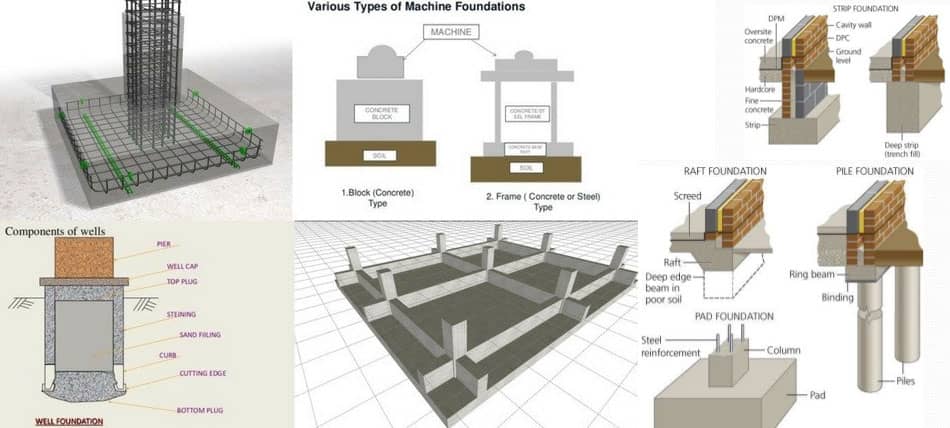Building Foundations and its types

Foundation can be defined as the lowest part in a particular structure, which has direct contact with the ground soil. Foundation is constructed in such a way that, it could distribute the load of the structure equally in the soil.
A foundation can be briefly categorized into two parts namely, deep foundation and shallow foundation. Deep Foundation; distributes the pressure and load of the structure into the deeper hole below the ground surface. Shallow Foundation; transfer the pressure into a shallow hole through the stratum.
Usually, before the structure is constructed, the type of foundation required by this structure is determined. Usually, for huge skyscrapers and high-rise buildings, a deep foundation is always suggested. Foundation must be designed in such a way that it should be capable of incorporating different effects of construction.
Foundations are usually constructed by putting trenches dig deeper into the soil up to the hard stratum is reached. For foundation strength and durability, concrete is used in this trench. This trench is later embodied with a reinforcement cage structure for its strength.
The outward projected steel bars act as a bone of the structure and must be linked to the substance above. After the foundation is perfectly constructed, the main structure construction is started. Foundation can be constructed by using concrete, steel rods, beams, bricks, etc.
The foundation of a structure must be build to prevent from various aspects like
- Foundation should be created in such a way that underlying soil does not cut loose.
- Every foundation has its own capacity of bearing load, try not to exceed that pressure.
Its Requirements to make a foundation strong
Foundation must be strong and durable in order to keep a structure's pressure. So accordingly, a good foundation must possess some basic requirements mentioned below
- A foundation is the first thing that is constructed keeping in mind the characteristics of the structure. Foundation is responsible to bear the load and distribute the same among the ground soil.
- A good solid foundation could transfer the load without any form of settlement in soil. This could result in compromising the stability of the structure.
- Always make sure that the base of a foundation should be rigid and avoid settlements. This kind of issue can mostly be located where the amount of load gets changed.
- Based on the quality of soil, a deeper foundation is always preferred so that any kind of issues can be prevented.
- The durability of the foundation also depends on the fact that the foundation must not get damaged or affected by future works.
Functions of a good foundation
A Few critical functions of good foundations are as mentioned below
- The main function of a foundation is to properly bear the load of the structure and distribute the pressure equally.
- A good foundation should be able to provide stability in a particular structure.
- Foundation should properly distribute the load.
- Foundation also provides an even ground for the construction of the sub-structure.
- A proper foundation also solves the undermining issues of a structure.
To learn more, watch the following video tutorial.
